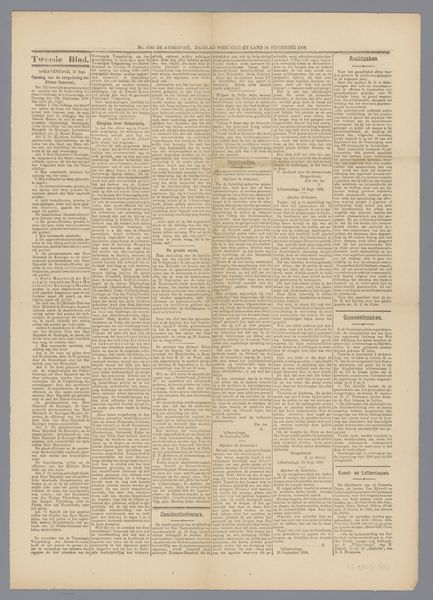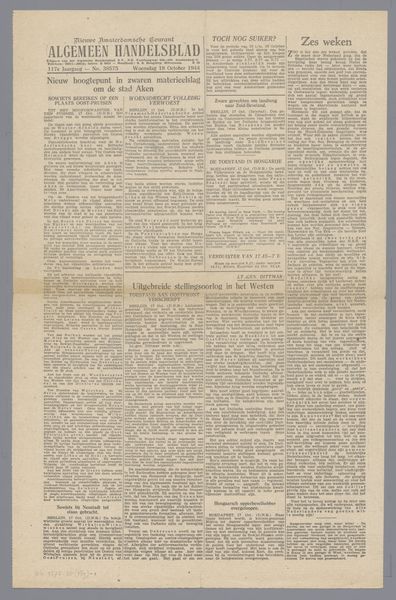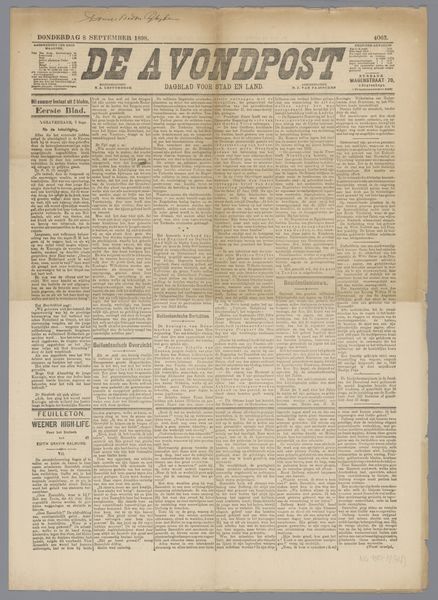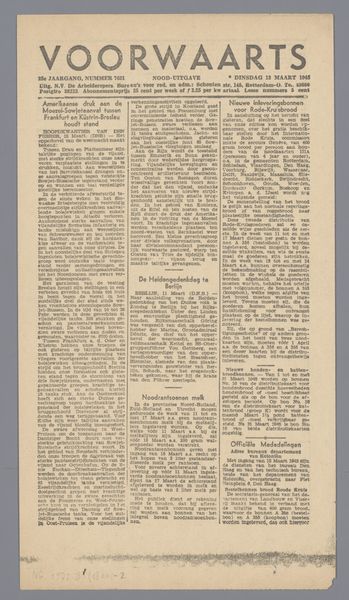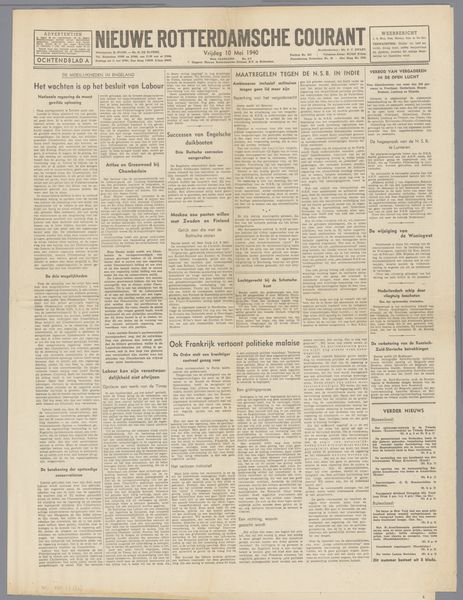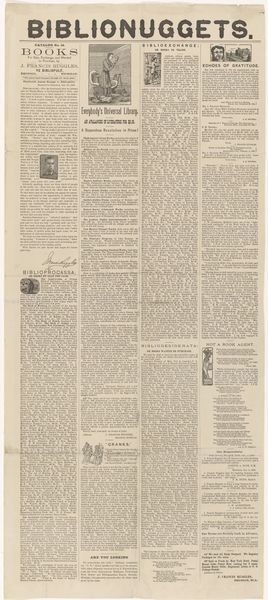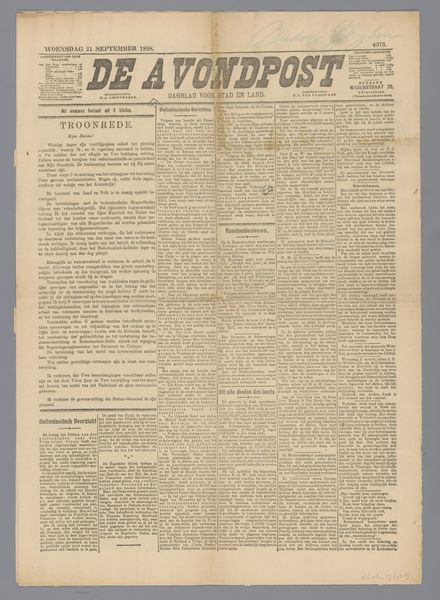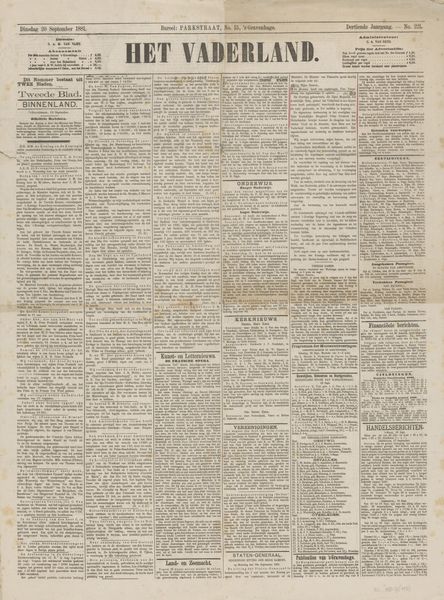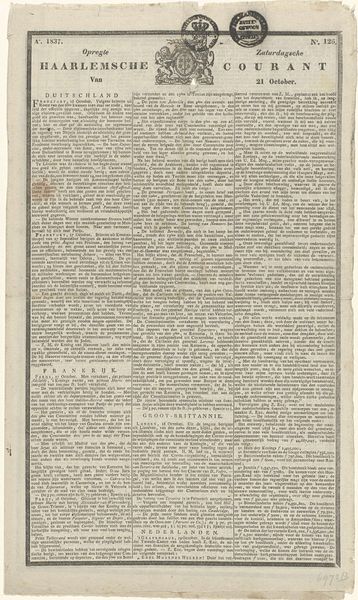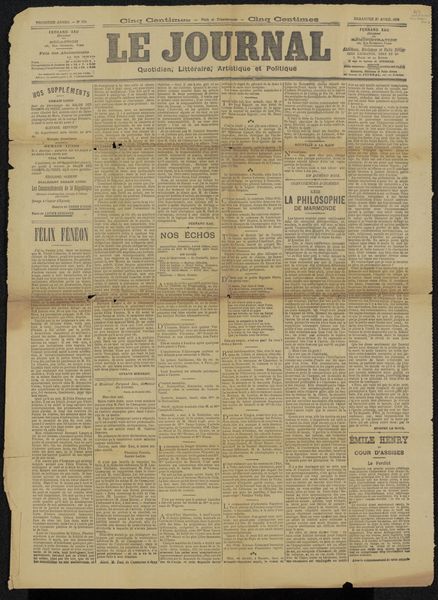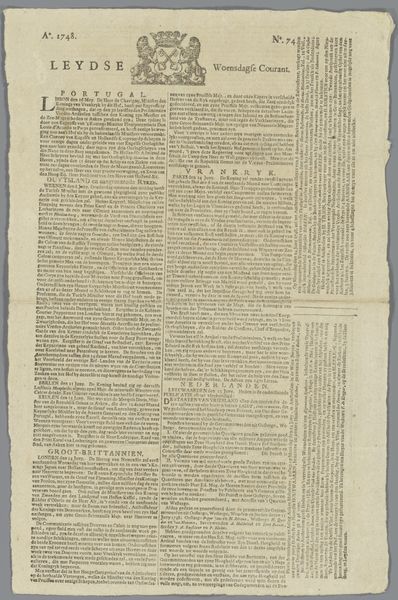
graphic-art, print, textile, paper, typography, poster
#
graphic-art
# print
#
textile
#
paper
#
typography
#
poster
#
modernism
Dimensions: height 55 cm, width 39 cm
Copyright: Rijks Museum: Open Domain
Curator: Here in front of us is "de Avondpost; dagblad voor stad en land," a broadsheet that may have been printed around 1898 or 1899. As a print, this artwork is a mixed-media work comprised of typography on paper. It is part of the Rijksmuseum collection. Editor: It really looks like an early modernist take on citizen media – dense blocks of text stacked together. It gives an overwhelming impression of accessibility and being a snapshot of the times. Curator: That’s astute, especially when considering the socio-political climate of the late 19th century. The increased availability of printed media gave rise to what Benedict Anderson called “imagined communities.” This form of newspaper and printing allowed people to collectively share information and participate in imagined social events, strengthening a collective cultural identity. Editor: Do you see how the rigid columns and typography stand in stark contrast with more fanciful, ornamental artistic productions of the period? Even in the history of design, this suggests a desire for a transparent public square where ideas are accessible for all. Curator: Exactly, but with a bit of caution. Who got to shape the message, and whose stories were told? While modernism strives for inclusivity, we should examine such material objects within asymmetrical systems of knowledge production that amplify dominant voices, but can often render others silent. Editor: The design seems deliberately egalitarian to me. Every column holds equal visual weight, doesn’t it? Are we to consider newspapers sites of both empowerment *and* subjugation? It seems counterintuitive! Curator: Not at all, because media consumption is never a neutral process. The paper itself provides insight into which stories are told and valued. When we engage with printed material like this, we must confront its entanglement with larger dynamics of race, gender, and class. The materiality of the paper provides the physical ground for those relations. Editor: This print truly embodies modernism by placing everyday citizens in dialogue through distributed information. But now I also appreciate the critical perspective you’ve lent, acknowledging that citizen media like this often presents power structures instead of evading them. Curator: I see that by analyzing the layers of discourse woven into the artwork, we gain greater critical purchase on the ways we build our collective reality.
Comments
No comments
Be the first to comment and join the conversation on the ultimate creative platform.
